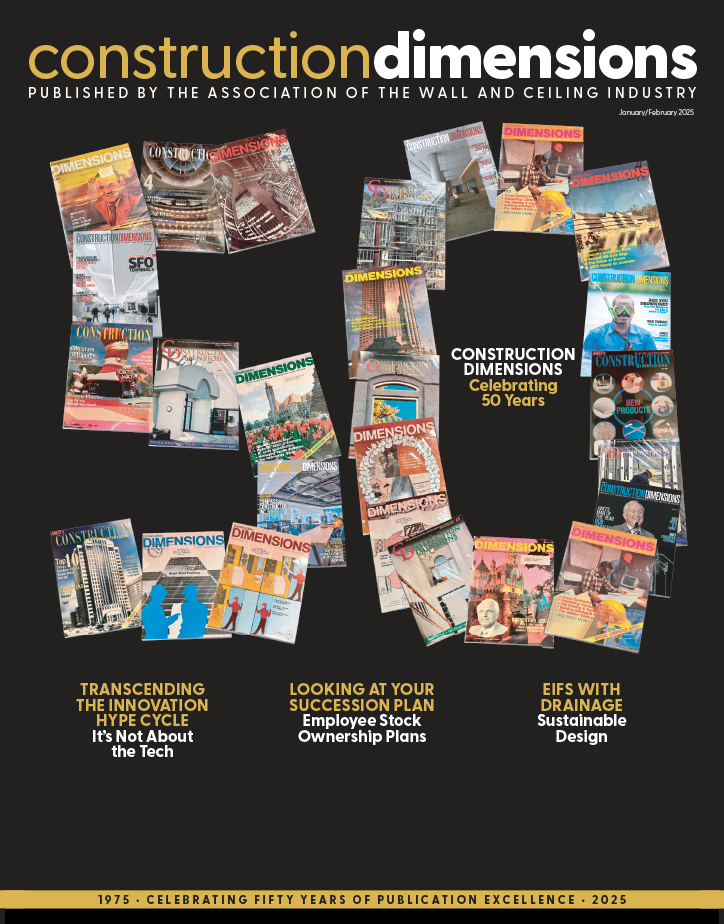E very dollar counts, and every penny wasted is precious. Losing small change on your construction projects can add up to thousands of dollars at the end of the year. So what are you to do? Maximizing profit must be a top priority right along with getting your projects completed on time. When you’re too busy working on the jobs, scheduling crews or doing work tasks, you don’t take or have enough time to focus on finances, financial tools and strategies that can help you hit your goals. Consider implementing these two proven strategies to maximize your bottom line and grow your bank balance.
Accurate General Conditions!
General conditions in construction include the onsite administration, supervision, temporary facilities, temporary protection and soft costs required to get your projects built. Estimating accurate general conditions for projects can be a simple task when the estimator is accountable to get it right. Most estimators use unit prices that are rarely checked against the actual final job costs. For example, creating a budget for temporary toilets seems easy. An eight-month job should cost 8 times $100 per month, which equals $800. But when the field superintendent sees there are 40 men on the job, more than one toilet and more than one servicing a week is required. This might increase the actual job cost by as much as $200 per month. These extra costs will add up to lots of lost cash.
The estimator’s number-one job and accountability is to calculate an accurate estimate of what it will cost to build each project. After every job, the estimator must look at the actual job costs to see if he miscalculated, overestimated or underestimated any of the project line items.
Before pricing every job, the estimator should meet with the project manager, field superintendent or foreman to determine what will be required to run the project he is currently bidding. Take a hard look to determine if you are charging the right price for the project manager, superintendent and their vehicles; project photos, signage, as-built drawings, etc.; temporary facilities such as trailers, toilets, sanitation; temporary utilities like electricity, power poles, water, phones, etc.; temporary fencing, gates, barricades, site lighting, heating, etc.; safety, first aid, shoring, access roads, security guards, etc.; water quality control, dust control, etc.; trash, cleanup and the final punchlist, etc.
Charge for All the Changes on Change Orders!
Change orders are written documents amending the original contract agreement between parties memorializing an additional or changed scope, price, time, schedule, terms or work item on a construction project. Most often they require additional money for the additional work required by the change.
As contractors, if you had $10 for every extra work item that your company, project manager, field superintendent or foreman did without a signed change order before the work was performed, could you have retired several years ago? When your customer asks for extra work, why is it so hard to get it in writing?
Everyone knows the contract requires signatures on change orders prior to starting extra work. But when you postpone getting formal approval for extra work until days, weeks or months after the event occurred, you have no leverage with your customer. And when you have no leverage, your customer is in a great position to settle or offer to pay a discounted price, change his/her mind, or decide the additional work wasn’t really extra and should have been included in the original contract.
To avoid this problem, present a complete cost breakdown for every proposed change order your customer requests in advance of starting the work. Use a standardized format, cost template and rate sheet to make sure you include everything the additional work actually costs. Every time extra work is performed, extra costs become evident. What are these extra costs? Some examples are the project management has to process the paperwork, supervision has to supervise the work, and accounting has to process the payment. Liability insurance may also go up, as may overhead.
Also, general condition costs rise with change-order work because the job will take longer. You may need to keep some items available on the job site for longer than originally estimated:
• Trailer, toilets, water and utilities.
• Power and power poles.
• Trucks and equipment.
• Small tools, ladders, bins, etc.
• Small items, nuts, bolts, hardware, etc.
• Temporary facilities, fencing, protection, barricades, etc.
Don’t short-change your company by not asking for everything you deserve. I see most change order requests presented as labor, materials and hard costs plus a markup—without extra required soft costs for the many items listed above. If your company does $5 million in annual sales and $250,000 of it is performed as change orders or on a cost-plus basis, not charging for everything you spend can cost you as much as $25,000 or more per year in lost revenue or net profit for things that you actually had to pay for.
Making money is not easy in construction. Look for every advantage you have to boost your net profit margin.
George Hedley works with contractors, entrepreneurs and business owners to build profitable, growing companies. As a construction company owner, he has built more than 500 projects valued at more than $500 million. He is a leading construction business expert, professional business coach, popular professional speaker, best-selling author and presenter at his Hardhat BIZSCHOOL online university. To find out how he can help your company, visit his websites at www.hardhatpresentations.com or www.hardhatbizschool.com, or e-mail [email protected].
- Events
-
-
-
March 31-April 3, 2025
The Westin Charlotte
Charlotte Convention Center
Charlotte, North CarolinaMore Events
-
-
-
- Education
-
-
- EIFS National CertificationDoing It Right ProgramsAdditional CoursesMore Learning Opportunities
-
-
-
- Media
-
- Resources
-
-
- Technical Resource LibraryHealth & SafetyFocuses & InitiativesMediaDirectories
-
-
-
- About
-





